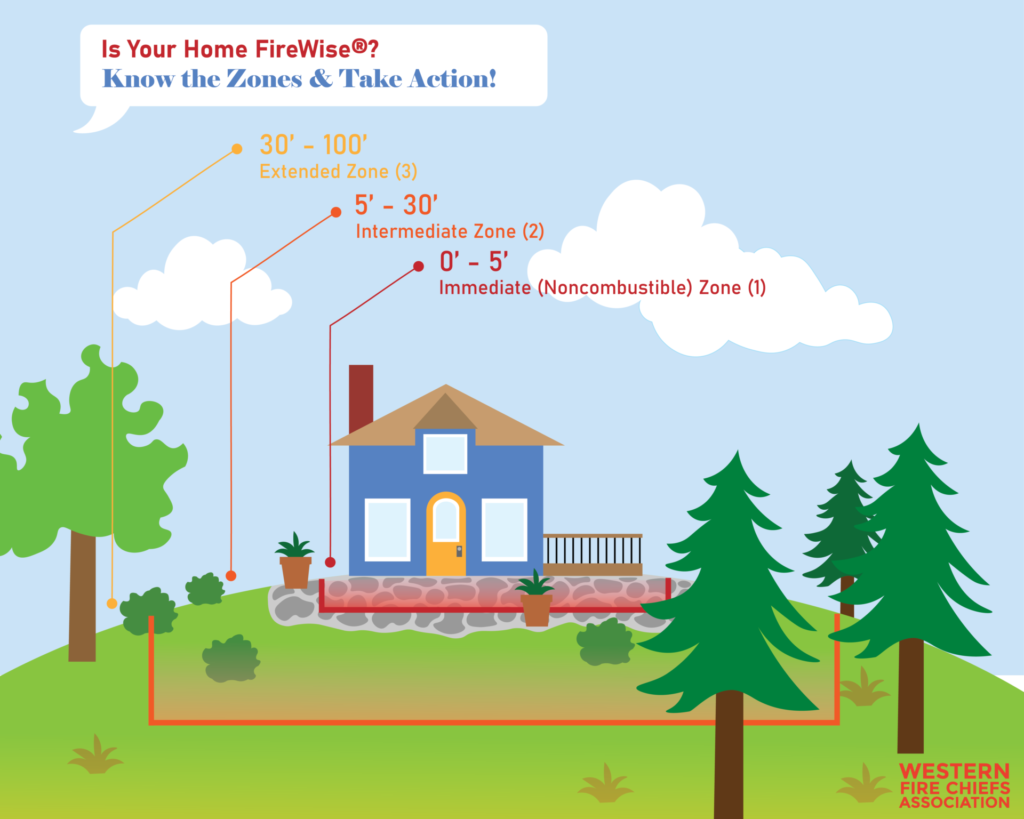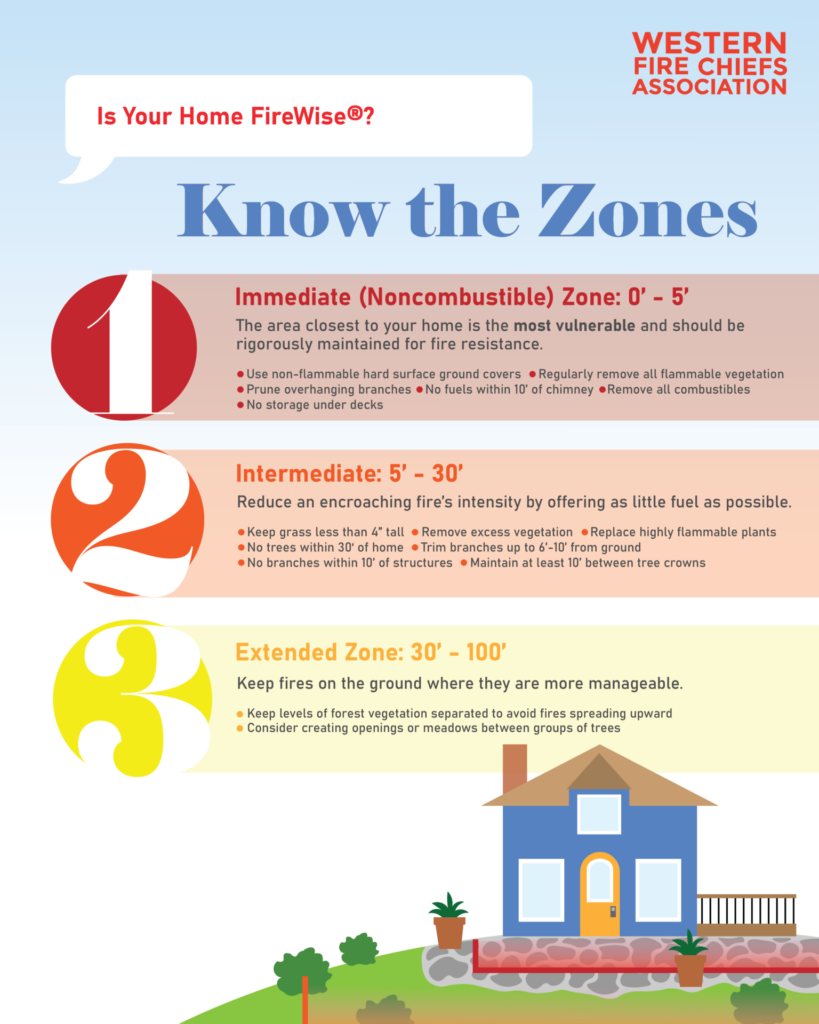Fire Pit Safety Tips
Stay safe around the campfire with tips from the Western Fire Chiefs Association. Learn essential precautions and practices for a worry-free outdoor campfire.
Learn how to create a Firewise® defensible space with guidance and best practices from the Western Fire Chiefs Association (WFCA).
Published:July 5, 2022
Edited:March 4, 2024
Learn how to create a Firewise® defensible space with guidance and best practices from the Western Fire Chiefs Association (WFCA).

Firewise USA® is a national program designed to provide communities and neighborhoods with a collaborative framework to help reduce wildfire risk. The Firewise® defensible space framework helps to bring communities together to create and implement local plans to protect their homes against the risk of wildfire, therefore reducing the likelihood of damage and loss if wildfires do occur in the area.
The program has a set of specific criteria for communities to follow to maximize their home’s resistance to structural damage caused during a wildfire event. To become recognized by the Firewise® USA program, the community must meet a set of voluntary criteria on an annual basis.
A Firewise® defensible space is any natural and/or landscaped area around a home or structure designed to improve the home’s chance of surviving a wildfire. In particular, defensible spaces act as a buffer between the home or outbuildings and any trees, grass, or shrubs that surround it, slowing the spread of wildfire.
Creating a defensible space around your property, often referred to as firescaping, could mean the difference between firefighters being able to save your home or not. Firstly, it aims to remove pathways for a wildfire to burn into a home. Second, it reduces radiant heat exposures and reduces the potential for embers to ignite vegetation or combustible materials near the home. Finally, it provides firefighters with a safe zone to work from.
To prepare your home for wildfire and create defensible space, it’s recommended to use the Home Ignition Zone (HIZ) concept. The HIZ is divided into three distinct zones that extend to 100 feet around the home.
The Immediate Zone represents everything within the five feet closest to your home. This may include plants, decks, outdoor furniture, and outside walls. Zone 1 is the most vulnerable. Therefore, it should be rigorously maintained for fire resistance.
This zone is designed to offer an encroaching fire as little fuel as possible to minimize its intensity. It is important to restrict fuel for a fire as it approaches your home because it the likelihood of igniting a structure from radiant heat.
This is the area furthest from your home. The objective here is to keep the fire on the ground where it will be less intense. In many cases, a distance of 100 feet will extend past the property line. If that is the case for you, work with neighbors to create an appropriate defensible space.

Winter is often the best time to complete ‘heavy duty’ fire preparedness tasks, such as thinning out dense patches of trees, removing flammable brush and weeds, and pruning the limbs of mature trees up to at least 10 feet above the ground.
While winter is considered the best time to do many tasks – you can also take steps to defend against fire year-round. Maintenance tasks such as clearing flammable debris from the gutters and around the home, making sure there are no flammable materials like firewood or patio furniture near your structures, and keeping grass and weeds mowed to less than 4 inches, are all things you can do to keep your home protected.
Stay safe around the campfire with tips from the Western Fire Chiefs Association. Learn essential precautions and practices for a worry-free outdoor campfire.
Discover essential firework safety tips to ensure a dazzling display without accidents. Learn how to celebrate responsibly with expert guidance from WFCA.
Explore the role of AI in wildfire prediction with guidance from the WFCA. Learn how advanced algorithms and data analytics enhance early detection and response.